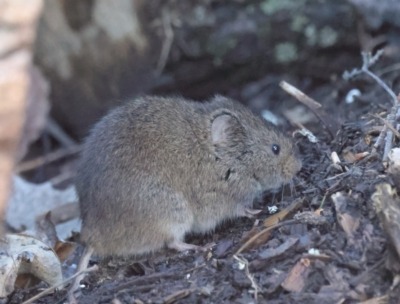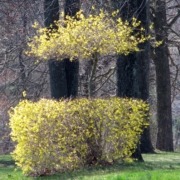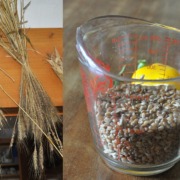MOUSEY THREATS AND SOLUTIONS
/4 Comments/in Pests/by Lee ReichFood and Lodging
Mice have been seeking bed and board, all to the detriment of us gardeners. Already their devilish deeds are evident in the gnawed bark at the base of a poor little apple tree that I planted in spring.
There are a few kinds of mice, and the meadow vole (Microtus pennsylvanicus) — also known as the meadow mouse or field mouse — is most at home in tall grass. There, this rodent finds food and a place to nest and scamper about shielded from the hungry eyes of hawks, owls, weasels, skunks, and other predators.
Unfortunately, from fall to spring, meadow voles like to supplement their usual diet of grasses and herbs with the bark of trees. My trees! Your trees!

Meadow-vole, Cephas, Attribution-Share-Alike-4.0-International.jpg
Inhospitality
The first line of defense against meadow voles, then, is to create an environment inhospitable to them. Read more
BUSH RESCUE
/2 Comments/in Pruning/by Lee ReichLet the Plant Express Itself
“I brake for butchered plants.” Perhaps that’s what the bumper sticker on my car should read, because I did almost slam on my brakes last week to try and save a forsythia bush — a whole row of them, in fact — from being butchered. An obviously well-intentioned guy was attacking the bushes on his front lawn with loppers.
A few things were wrong with this scene. Read more
STUFFED
/2 Comments/in Fruit, Gardening, Vegetables/by Lee ReichGrow Your Own Stuffing
Thanksgiving is a time of year when one’s thoughts naturally turn to . . . stuffing. No, not stuffing yourself, but stuffing a turkey. Even many people who choose not to eat turkey on Thanksgiving nonetheless do enjoy stuffing themselves with stuffing.
So why not think about what ingredients for stuffing can be reaped from the garden? Even better, how about setting aside a little portion of the garden next year as a stuffing garden?
The bread and butter of any stuffing is some starchy food, often bread and butter itself, the bread usually as crumbs. There’s no breadcrumb plant, so forget about growing breadcrumbs. Not that you couldn’t buy some wheat “berries” at a health food store, plant them next spring, harvest the grain when the plants dry down, thresh and winnow out the berries, grind them into flour, make the flour into bread, then let the bread go stale and pound it into bread crumbs.

Growing breadcrumbs– I did it once!




